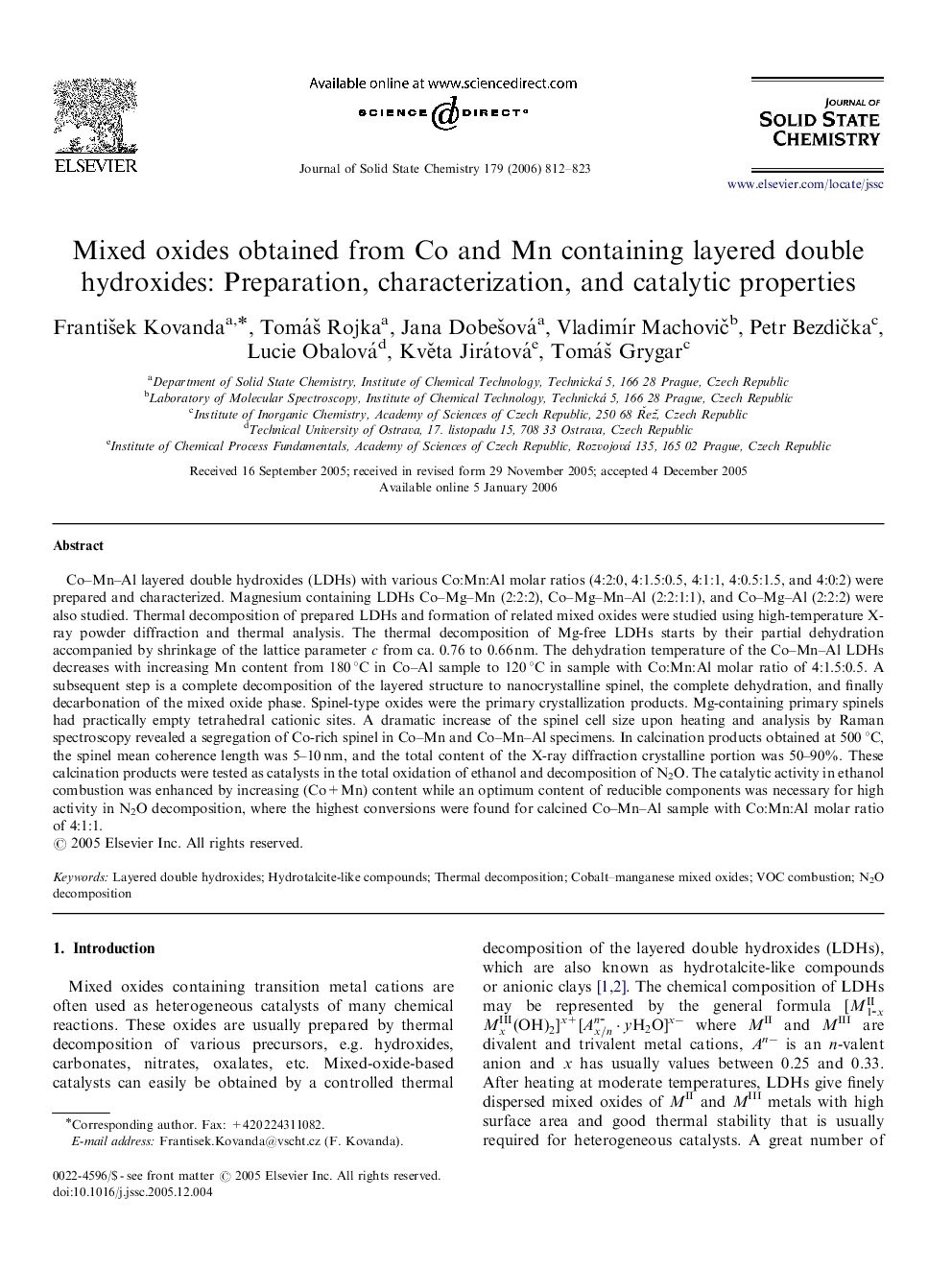| Article ID | Journal | Published Year | Pages | File Type |
|---|---|---|---|---|
| 1331955 | Journal of Solid State Chemistry | 2006 | 12 Pages |
Co–Mn–Al layered double hydroxides (LDHs) with various Co:Mn:Al molar ratios (4:2:0, 4:1.5:0.5, 4:1:1, 4:0.5:1.5, and 4:0:2) were prepared and characterized. Magnesium containing LDHs Co–Mg–Mn (2:2:2), Co–Mg–Mn–Al (2:2:1:1), and Co–Mg–Al (2:2:2) were also studied. Thermal decomposition of prepared LDHs and formation of related mixed oxides were studied using high-temperature X-ray powder diffraction and thermal analysis. The thermal decomposition of Mg-free LDHs starts by their partial dehydration accompanied by shrinkage of the lattice parameter c from ca. 0.76 to 0.66 nm. The dehydration temperature of the Co–Mn–Al LDHs decreases with increasing Mn content from 180 °C in Co–Al sample to 120 °C in sample with Co:Mn:Al molar ratio of 4:1.5:0.5. A subsequent step is a complete decomposition of the layered structure to nanocrystalline spinel, the complete dehydration, and finally decarbonation of the mixed oxide phase. Spinel-type oxides were the primary crystallization products. Mg-containing primary spinels had practically empty tetrahedral cationic sites. A dramatic increase of the spinel cell size upon heating and analysis by Raman spectroscopy revealed a segregation of Co-rich spinel in Co–Mn and Co–Mn–Al specimens. In calcination products obtained at 500 °C, the spinel mean coherence length was 5–10 nm, and the total content of the X-ray diffraction crystalline portion was 50–90%. These calcination products were tested as catalysts in the total oxidation of ethanol and decomposition of N2O. The catalytic activity in ethanol combustion was enhanced by increasing (Co+Mn) content while an optimum content of reducible components was necessary for high activity in N2O decomposition, where the highest conversions were found for calcined Co–Mn–Al sample with Co:Mn:Al molar ratio of 4:1:1.
Graphical abstractRaman spectroscopy revealed a segregation of Co-rich spinel in Co–Mn samples calcined at low temperatures.Figure optionsDownload full-size imageDownload as PowerPoint slide
